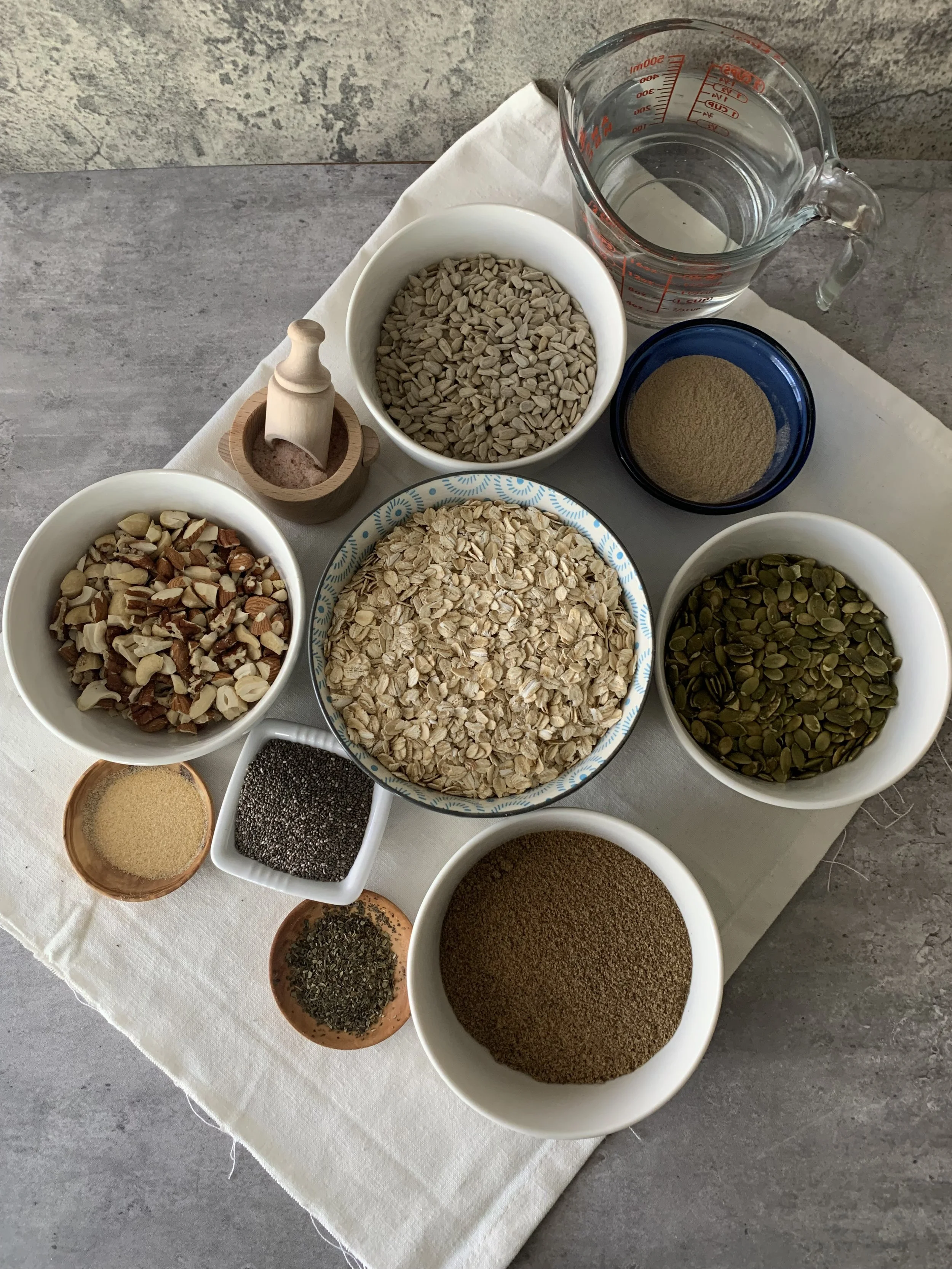Ioana’s digestive bread
I had a post about constipation this week on my Instagram page, and what better recipe to share than a bread with a lot of fiber, to push all that baggage out!
If you have been following me for a while, you know that I encourage all my clients to be gluten-free. I am not a gluten maniac, and this isn't something that I like to repeat every day to hear myself saying it.
As a functional nutritionist, I have a deeper understanding of how gluten affects health. The first step of the functional approach is clearing the muddy waters, and this always means going gluten-free, dairy-free, sugar-free.
Going back to our bread recipe- finding good gluten-free bread can be tricky, expensive, and annoying. Some GF loaves of bread are too processed or don't taste good, don't have good texture, and so on.
While it's impossible to recreate the aerated texture of wheat bread, and it is not going to happen in this case, you need to focus on functionality. This bread is healthy, tastes good, has high fiber content, has all-natural ingredients, and is easy to make at home. Voilà!
Stop complaining about texture; sometimes healthy foods are an acquired taste after a life of processed foods. Just give it a try!
This bread is deep, dark, heavy, full of flavor, great texture, meant to be snacked on more than eaten half a loaf once.
CAUTION
Psyllium is one of nature’s most absorbent fibers, able to suck up over ten times it's weight in water. For this reason, you’ll often find psyllium in laxatives formulations, stool-bulking agents, colon cleansing kits- basically anything having to do with poo, constipation or diarrhea.
Please drink plenty of water if you eat this bread to avoid getting constipated, but also drink plenty of water with this bread if you are constipated, for better transit. Overall, you should be drinking plenty of water for better health.
RECIPE
(makes one loaf)
Ingredients (all organic if possible)
1.5 cups/145g gluten-free oats
1/2 cup/65g nuts of choice chopped(I used almonds, caju, pecans)
2 Tbsp chia seeds
1/2 cup/70g sunflower seeds
1/2 cup/70g pumpkin seeds
1/2 cup/90g ground flax seeds
3 Tbsp psyllium husk powder
1 tsp pink Himalayan salt
1 tsp garlic powder
1 tsp fresh/dry thyme, oregano, parsley or rosemary
1 Tbsp honey
3 Tbsp olive oil
1.5 cups/350ml filtered water
Instructions
Combine all dry ingredients, stirring well;
Whisk the honey, oil and water together in a measuring cup;
Add the dry ingredients and mix very well until everything is completely soaked and dough becomes very thick;
Put the dough in a 6/9-inch loaf pan and let it sit out on the counter for at least 30 min.
Preheat oven to 350°F/175°C;
Place loaf pan in the oven on the middle rack, and bake for 20 minutes. Remove bread from the pan, place it directly on the oven rack and bake for another 3o minutes fully exposed;
Bread is done when it sounds hollow when tapped. Let cool completely before slicing, helps maintain shape;
Store bread in a tightly sealed container for up to five days. Freezes well too – slice before freezing for quick and easy toast!
Enjoy!
As usual, these are my thoughts and ideas, not medical advice. You are encouraged to create your own recipes or search for some suited to your needs. I am just sharing my opinions, hoping that I can help some of you to make better choices.
Please remember that we all have different nutritional needs and that food affects us differently. If you are not sure which foods are best for you, reach out for a free phone consultation.
In good health,
Ioana





